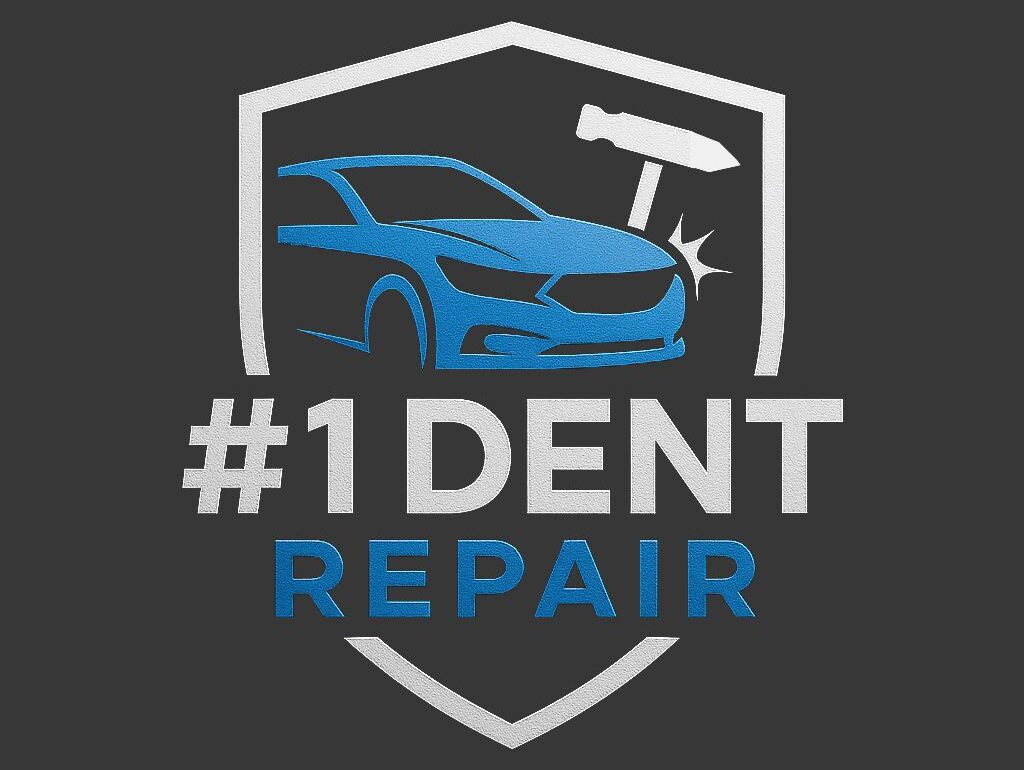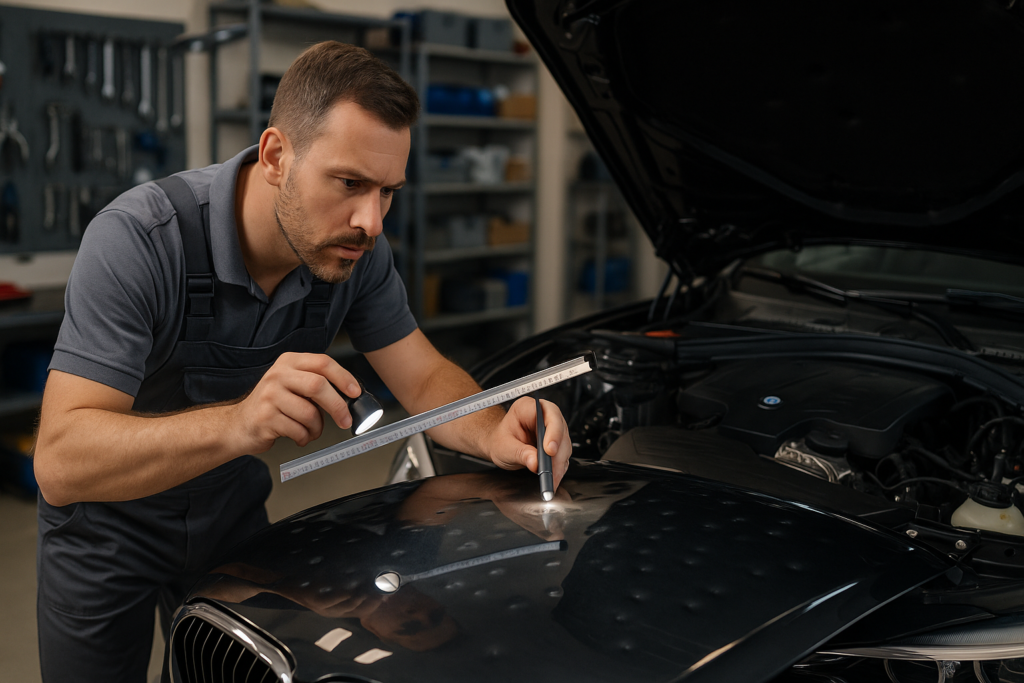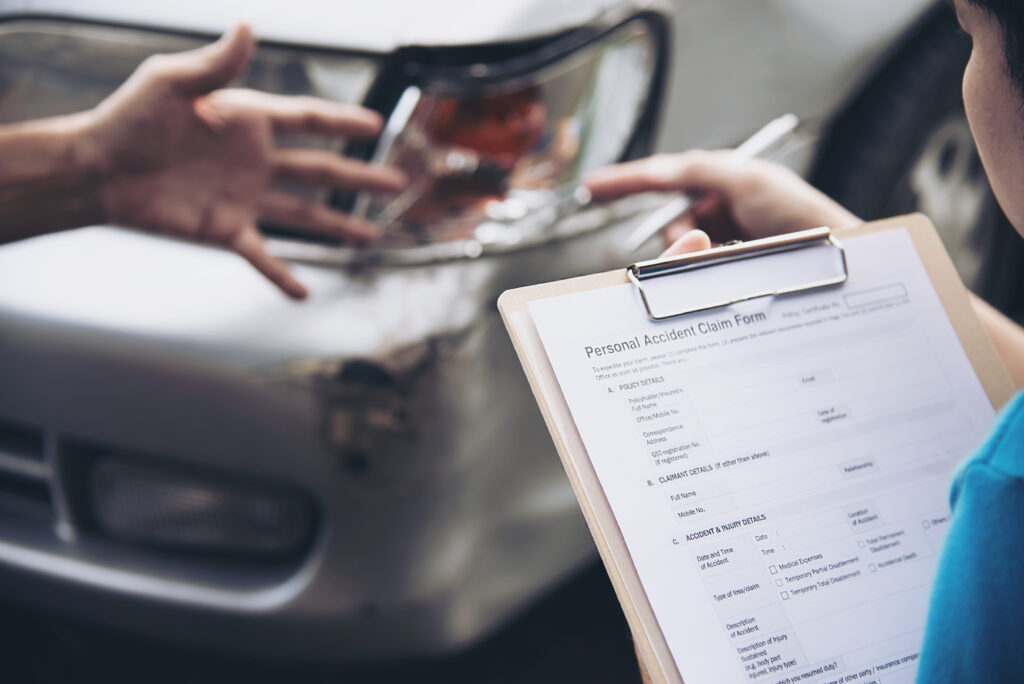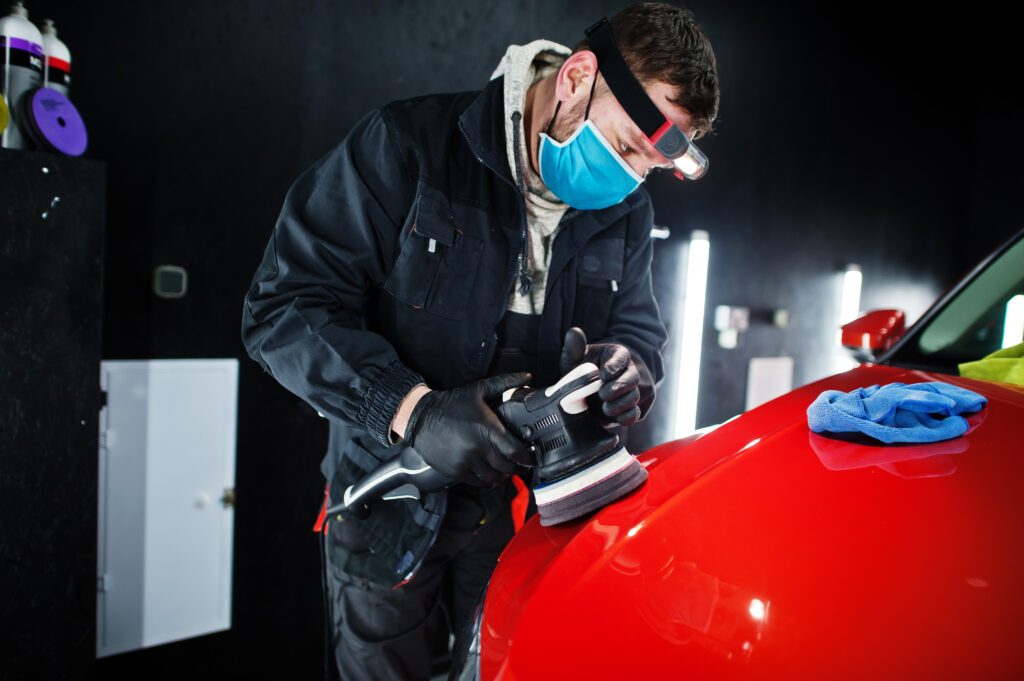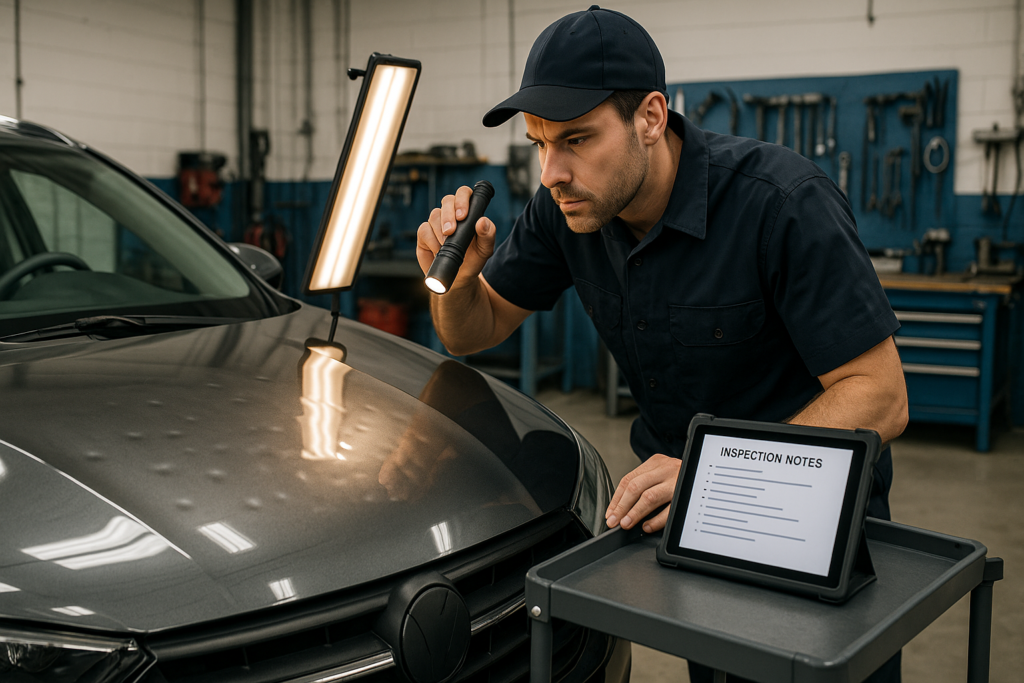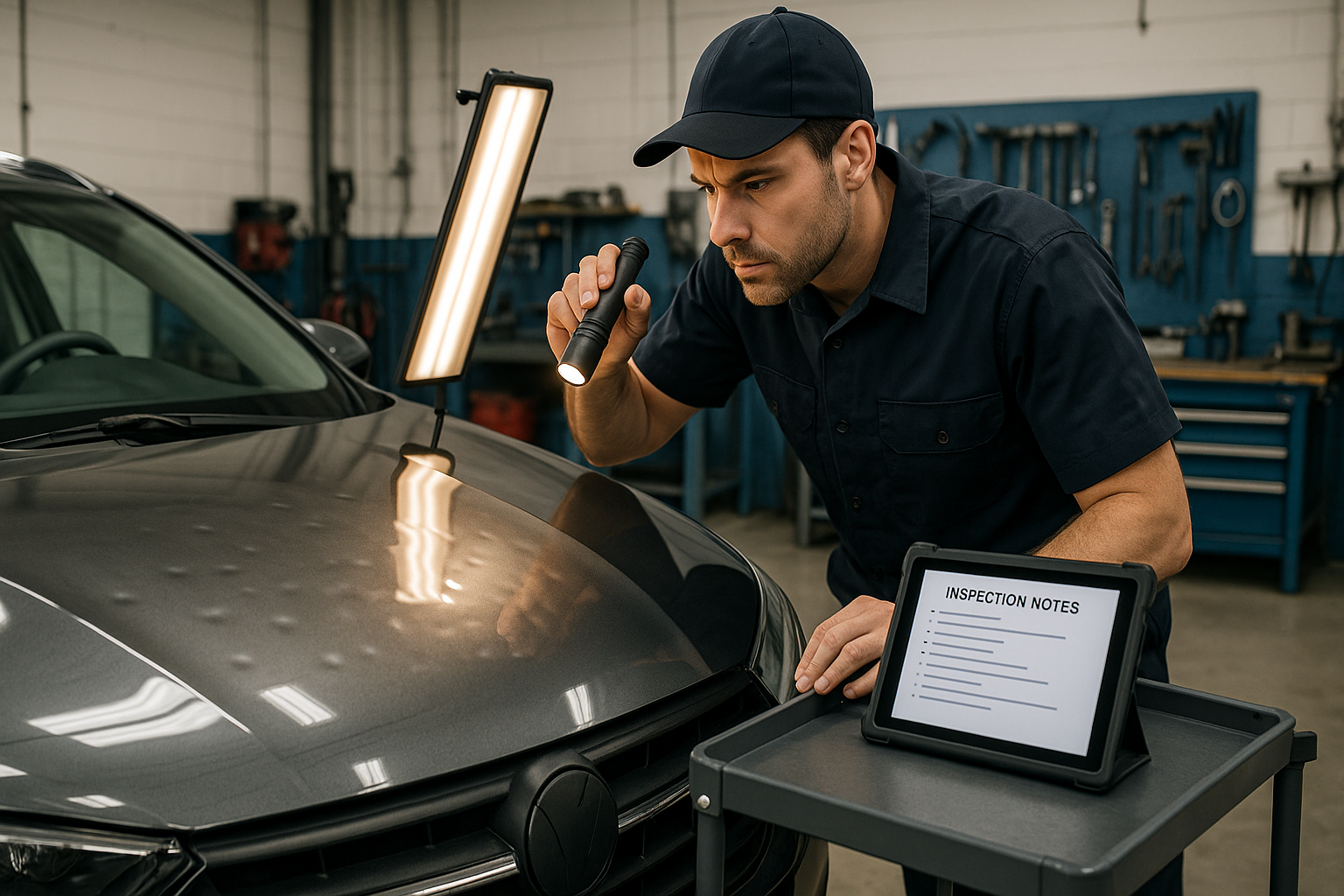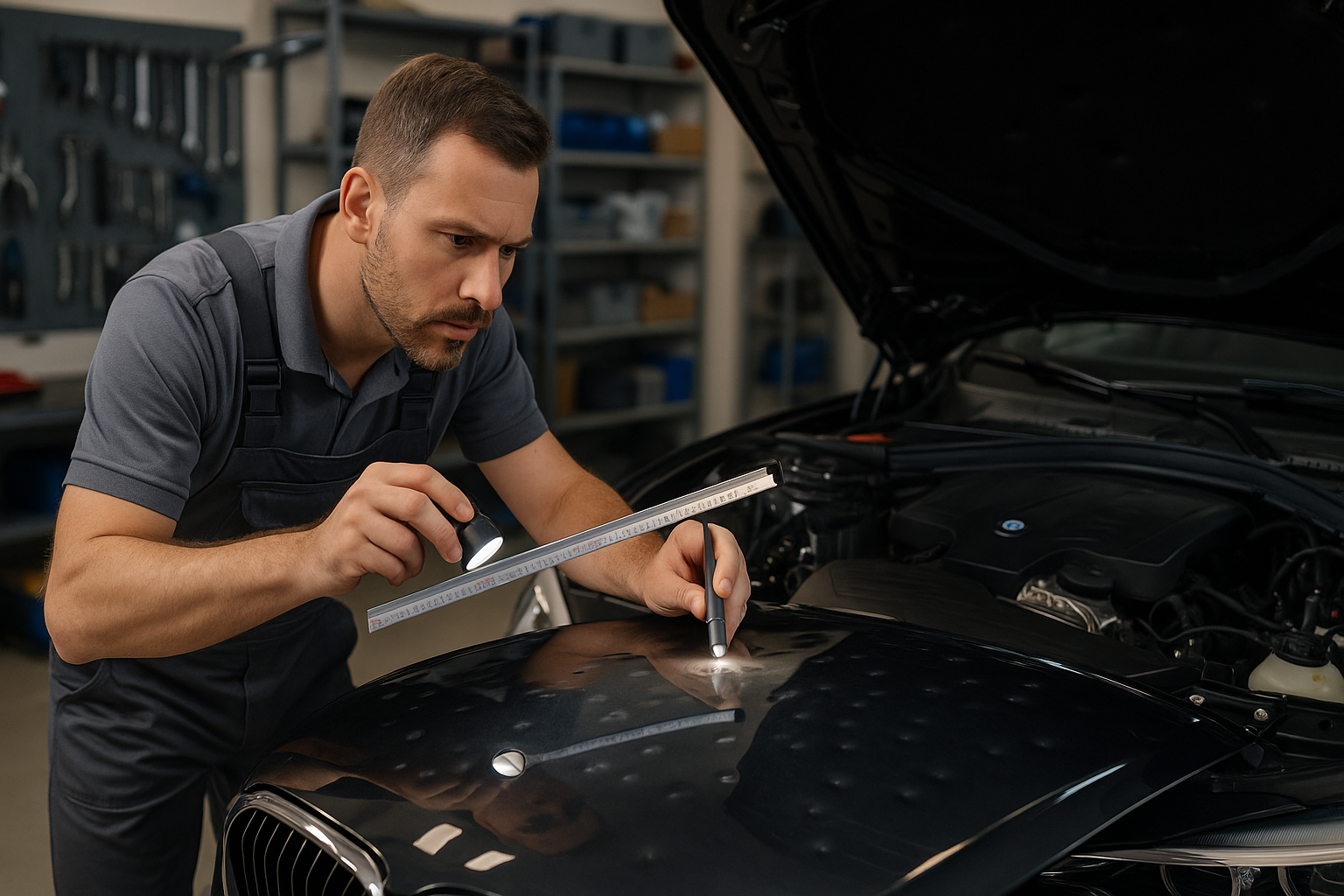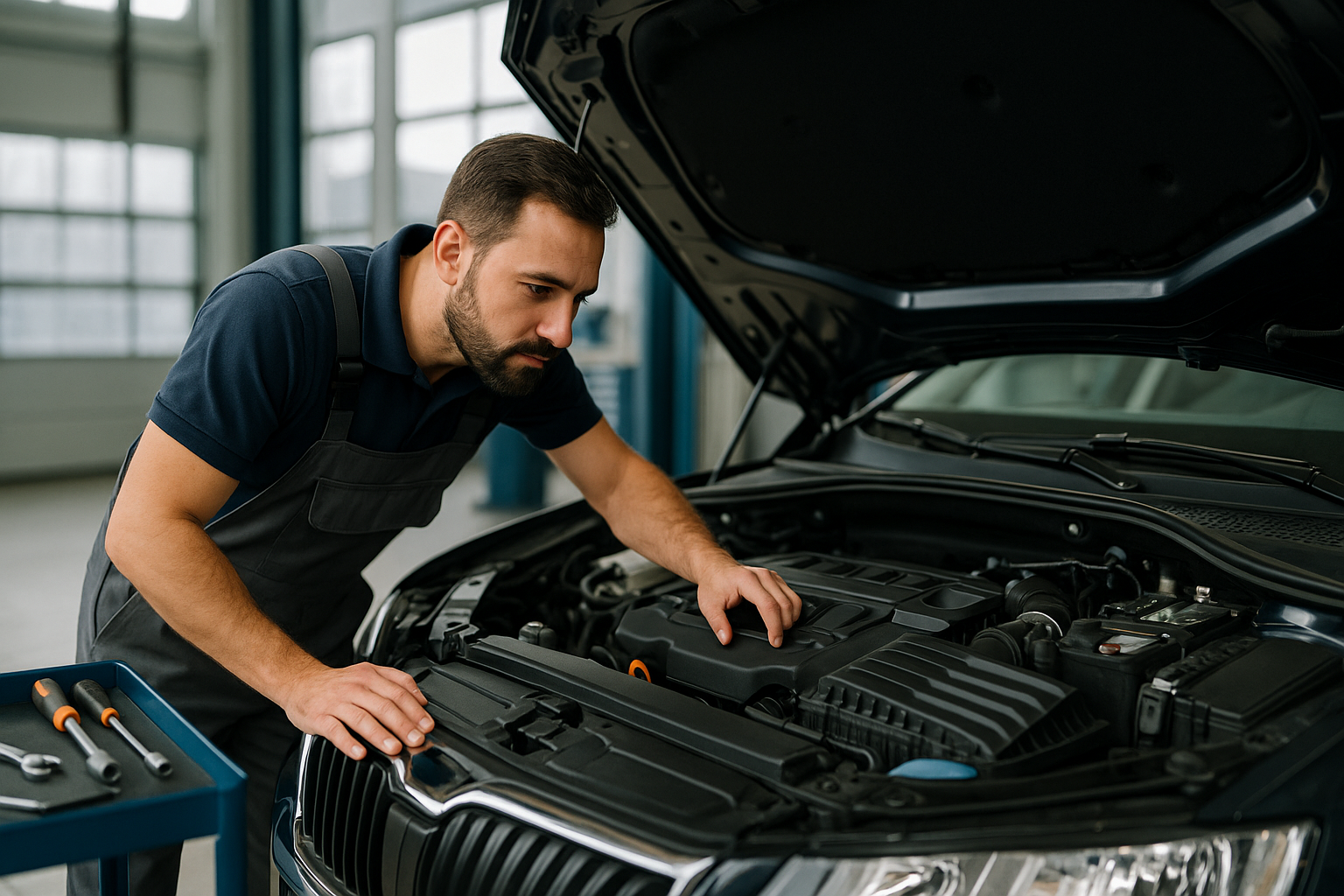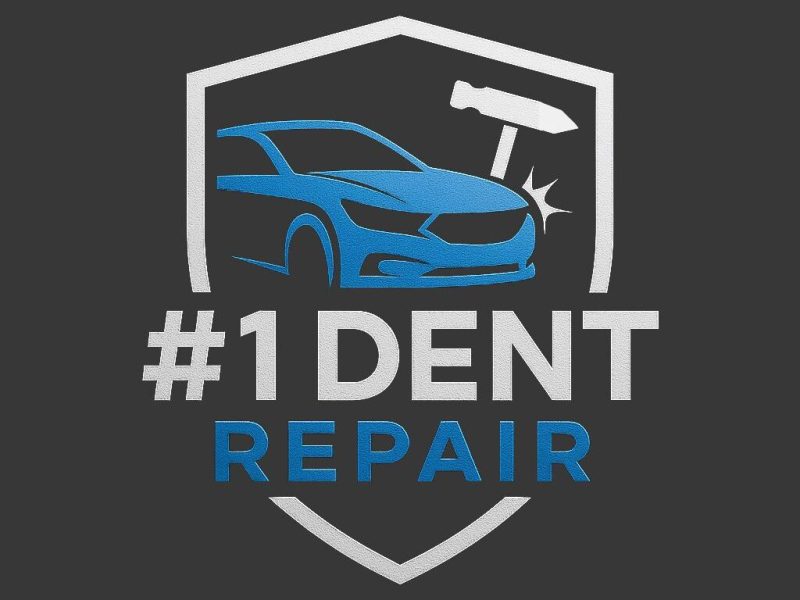In the United States, hailstorms are one of the leading causes of automotive property damage. According to the National Oceanic and Atmospheric Administration (NOAA), more than 6,000 severe hail events are recorded annually, causing billions of dollars in damages to vehicles, homes, and infrastructure.
For drivers, knowing how to handle hail damage is essential to protect their assets, maintain resale value, and avoid greater financial losses.
In this article, you’ll find practical advice, strategic guidance, and detailed explanations on how to act quickly after a hailstorm. Learn how to care for your car and make financially sound decisions — especially critical in a country increasingly affected by extreme weather events.
Perform a Thorough Inspection Immediately
After a hailstorm, the first essential step is to conduct a comprehensive visual inspection of your vehicle. Even minor dents or cracks can compromise both aesthetics and safety.
What to check:
- Dents on the hood, roof, doors, and trunk.
- Cracks or fractures on the windshield and side windows.
- Damage to mirrors, headlights, and taillights.
It’s critical to document all damages with high-resolution photographs, preferably showing the date and time. This documentation will be crucial for insurance claims and future vehicle evaluations.
Important: Some damage, especially micro-cracks in glass, may worsen over time due to temperature changes. A careful inspection under good lighting conditions is indispensable.
Source: NOAA – Severe Weather Events
Don’t Leave Damage Unrepaired
Ignoring hail damage can have serious consequences for your vehicle.
Besides the aesthetic impact, dents can cause paint fractures, exposing the metal to rust and corrosion.
Main risks of not repairing damage:
- Accelerated rust formation.
- Spreading windshield cracks, compromising structural integrity.
- Significant resale value depreciation.
According to Carfax, vehicles with unrepaired hail damage can lose up to 15% of their market value.
This is particularly important in states like Texas, Colorado, and Nebraska, where hail is frequent and buyers are cautious about vehicle history.
Prioritize Paintless Dent Repair (PDR)

If the hail damage only caused dents without cracking the paint, the best solution is Paintless Dent Repair (PDR).
Advantages of PDR:
- Preserves the vehicle’s original paint, avoiding costly repainting.
- Reduces repair time and costs compared to traditional bodywork.
- Maintains the structural integrity and market value of the car.
- Prevents salvage titles that could drastically lower resale value.
In the U.S., insurance companies frequently recommend PDR whenever possible, as it allows a full restoration without compromising the car’s history.
Pro tip:
Look for body shops with technicians certified by Vale Training Solutions or accredited by I-CAR, both recognized authorities in automotive repair certification.
Consult and File Your Insurance Claim Properly
Most comprehensive insurance policies in the United States cover hail damage. However, it’s crucial to carefully review your policy to understand deductible amounts and claim procedures.
Steps to file a hail damage claim:
- Notify your insurer immediately after the storm.
- Provide photographic documentation and a detailed description of the damages.
- Schedule a vehicle inspection with the insurance adjuster.
- Check if your insurer has “preferred repair shops” to expedite the repair process.
In states located in the Hail Alley (Colorado, Texas, Kansas, and Nebraska), some insurance policies may include specific clauses for frequent natural events, so staying informed is key.
Source: Insurance Information Institute – Hail Damage
Choose Specialized Hail Damage Repair Shops
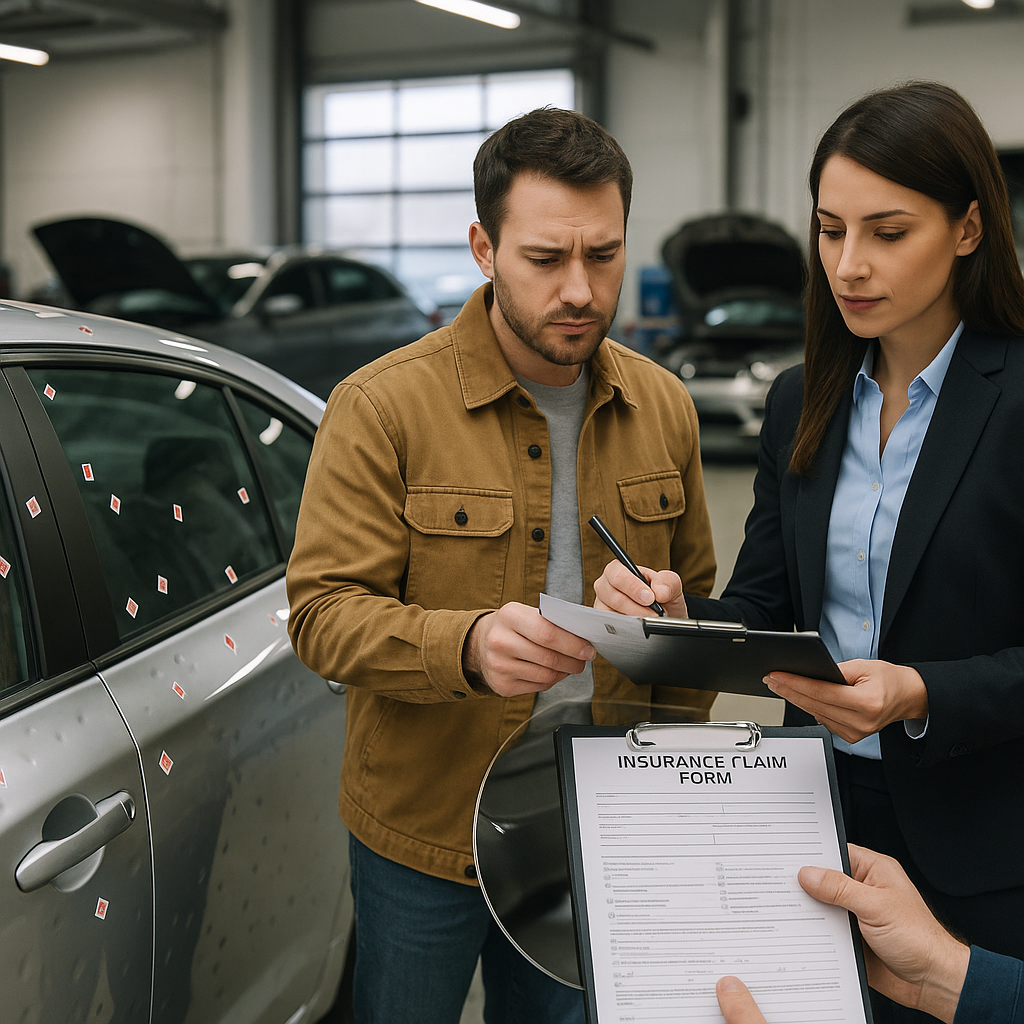
Not every body shop is equipped to handle the complexities of hail damage.
Choosing a specialized repair center makes all the difference.
✅ Key points when choosing a repair shop:
- Verified experience in hail damage repairs.
- Certified PDR technicians.
- Warranty provided for repair services.
- Full support during the insurance claim process.
Always check the business’s reputation through the Better Business Bureau (BBB) and review platforms like Google Reviews and Yelp.
According to Auto Body Review, vehicles properly repaired after hailstorms can regain up to 98% of their original market value.
Conclusion
Hail damage is more than cosmetic — it’s a real threat to your vehicle’s value and safety.
In the United States, where severe weather is increasingly common, taking swift and strategic action is vital to minimizing financial losses.
Conduct a thorough inspection,
Document all damages,
Prioritize PDR techniques,
Engage with your insurance wisely, and
Choose specialized and certified repair professionals.
Don’t let hail compromise your investment.
Get in touch with a professional hail damage repair team today and restore your car’s beauty and protection!
🔗 External Links Used:
- NOAA – Severe Weather Events
- Carfax – Hail Damage Reports
- Vale Training Solutions – PDR Certification
- I-CAR – Automotive Certification
- Insurance Information Institute – Hail Damage
- Auto Body Review – Paintless Dent Repair Benefits
- BBB – Business Reputation
- Google Maps – Local Reviews
- Yelp – Find Trusted Auto Body Shops
